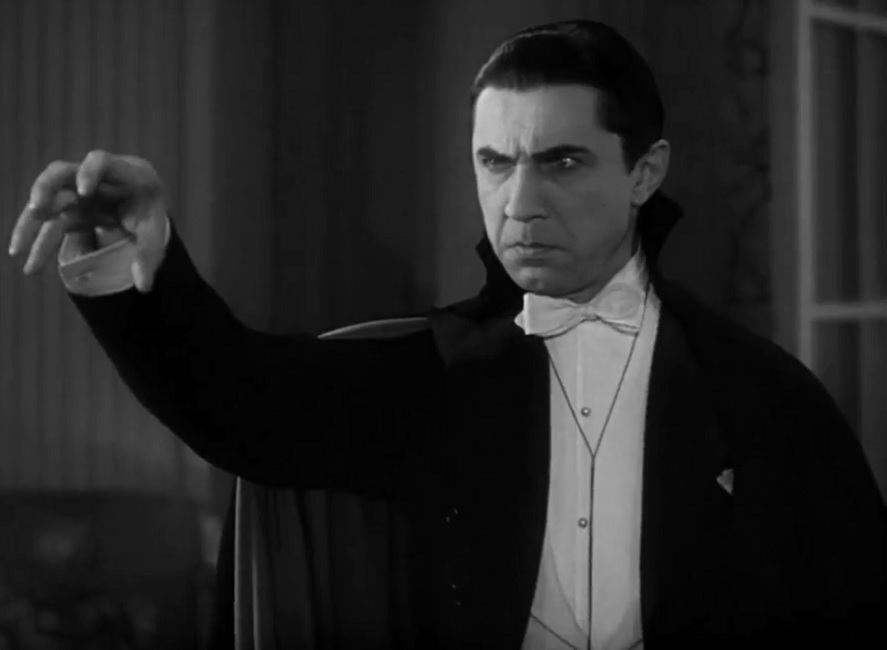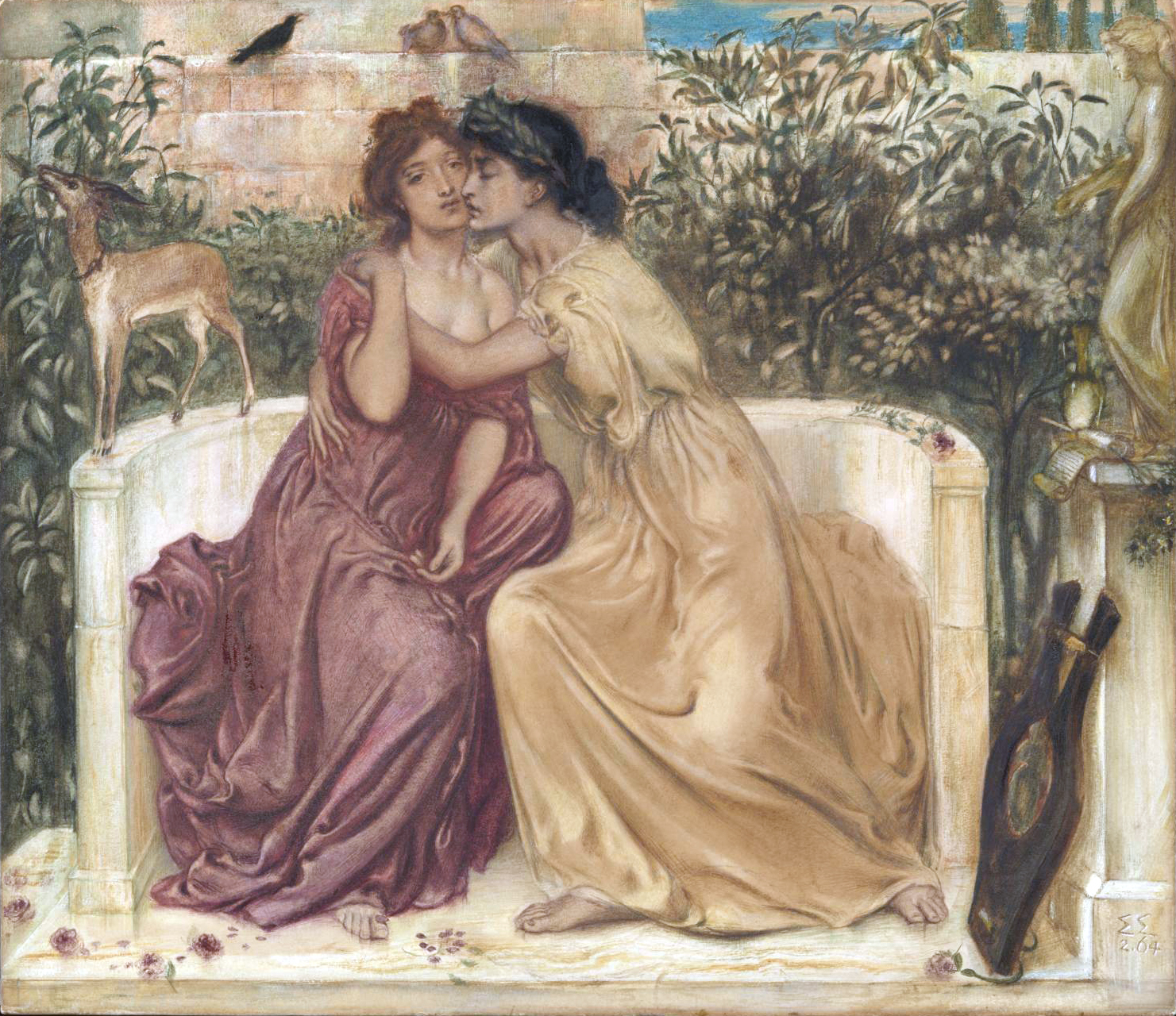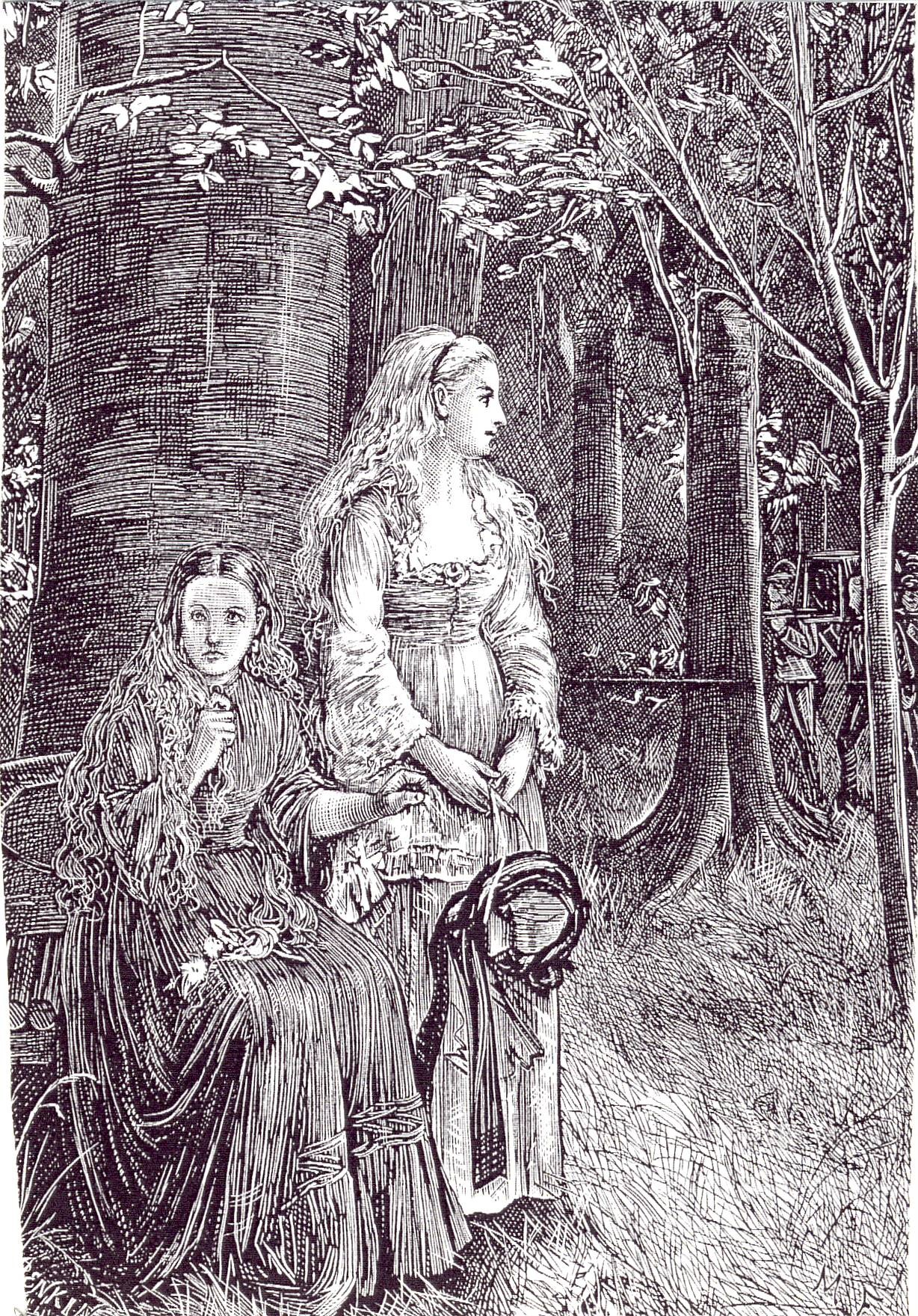|
Dracula's Daughter
''Dracula's Daughter'' is a 1936 American vampire horror film produced by Universal Pictures as a sequel to the 1931 film ''Dracula''. Directed by Lambert Hillyer from a screenplay by Garrett Fort, the film stars Otto Kruger, Gloria Holden in the title role, and Marguerite Churchill, and features, as the only cast member to return from the original, Edward Van Sloan – although his character's name was altered from "Van Helsing" to "''Von'' Helsing". ''Dracula's Daughter'' tells the story of Countess Marya Zaleska, the daughter of Count Dracula and herself a vampire. Following Dracula's death, she believes that by destroying his body, she will be free of his influence and live normally. When this fails, she turns to a psychiatrist, Dr. Jeffrey Garth (Kruger). The Countess kidnaps Dr. Garth's assistant, Janet (Marguerite Churchill), and takes her to Transylvania, leading to a battle between Dr. Garth and the Countess in an attempt by him to save Janet. Ostensibly b ... [...More Info...] [...Related Items...] OR: [Wikipedia] [Google] [Baidu] |
Karoly Grosz (illustrator)
Karoly Grosz ( , ; ; 1896–after 1938) was a Hungarian–American illustrator of Classical Hollywood–era film posters. As art director at Universal Pictures for the bulk of the 1930s, Grosz oversaw the company's advertising campaigns and contributed hundreds of his own illustrations. He is especially recognized for his dramatic, colorful posters for classic horror films. Grosz's best-known posters advertised early Universal Classic Monsters films such as ''Dracula'' (1931), ''Frankenstein'' (1931), '' The Mummy'' (1932), ''The Invisible Man'' (1933), and ''Bride of Frankenstein'' (1935). Beyond the horror genre, his other notable designs include posters for the epic war film '' All Quiet on the Western Front'' (1930) and the screwball comedy ''My Man Godfrey'' (1936). Original lithograph copies of his poster art are scarce and highly valued by collectors. Two posters illustrated by Grosz—ads for ''Frankenstein'' and ''The Mummy'', respectively—have set the auction rec ... [...More Info...] [...Related Items...] OR: [Wikipedia] [Google] [Baidu] |
Vampire Film
Vampire films have been a staple in world cinema since the era of silent films, so much so that the depiction of vampires in popular culture is strongly based upon their depiction in films throughout the years. The most popular cinematic adaptation of vampire fiction has been from Bram Stoker's 1897 novel ''Dracula'', with over 170 versions to date. Running a distant second are adaptations of the 1872 novel ''Carmilla'' by Sheridan Le Fanu. By 2005, the Dracula character had been the subject of more films than any other fictional character except Sherlock Holmes. As folklore, vampires are defined by their need to feed on blood and on their manipulative nature; this theme has been held in common throughout the many adaptations. Although vampires are usually associated with the horror (and sometimes the zombie genre), vampire films may also fall into the drama, action, science fiction, romance, comedy, or fantasy genres, amongst others. History Early cinematic vampires in ot ... [...More Info...] [...Related Items...] OR: [Wikipedia] [Google] [Baidu] |
Metro-Goldwyn-Mayer
Metro-Goldwyn-Mayer Studios Inc., also known as Metro-Goldwyn-Mayer Pictures and abbreviated as MGM, is an American film, television production, distribution and media company owned by Amazon through MGM Holdings, founded on April 17, 1924 and based in Beverly Hills, California. MGM was formed by Marcus Loew by combining Metro Pictures, Goldwyn Pictures, and Louis B. Mayer Pictures into one company. It hired a number of well known actors as contract players—its slogan was "more stars than there are in heaven"—and soon became Hollywood's most prestigious film studio, producing popular musical films and winning many Academy Awards. MGM also owned film studios, movie lots, movie theaters and technical production facilities. Its most prosperous era, from 1926 to 1959, was bracketed by two productions of '' Ben Hur''. After that, it divested itself of the Loews movie theater chain, and, in the 1960s, diversified into television production. In 1969, Kirk Kerkorian bough ... [...More Info...] [...Related Items...] OR: [Wikipedia] [Google] [Baidu] |
Lesbian
A lesbian is a Homosexuality, homosexual woman.Zimmerman, p. 453. The word is also used for women in relation to their sexual identity or sexual behavior, regardless of sexual orientation, or as an adjective to characterize or associate nouns with female homosexuality or same-sex attraction. The concept of "lesbian" to differentiate women with a shared sexual orientation evolved in the 20th century. Throughout history, women have not had the same freedom or independence as men to pursue homosexual relationships, but neither have they met the same harsh punishment as homosexual men in some societies. Instead, lesbian relationships have often been regarded as harmless, unless a participant attempts to assert privileges traditionally enjoyed by men. As a result, little in history was documented to give an accurate description of how female homosexuality was expressed. When early sexologists in the late 19th century began to categorize and describe homosexual behavior, hampere ... [...More Info...] [...Related Items...] OR: [Wikipedia] [Google] [Baidu] |
Novella
A novella is a narrative prose fiction whose length is shorter than most novels, but longer than most short stories. The English word ''novella'' derives from the Italian ''novella'' meaning a short story related to true (or apparently so) facts. Definition The Italian term is a feminine of ''novello'', which means ''new'', similarly to the English word ''news''. Merriam-Webster defines a novella as "a work of fiction intermediate in length and complexity between a short story and a novel". No official definition exists regarding the number of pages or words necessary for a story to be considered a novella, a short story or a novel. The Science Fiction and Fantasy Writers Association defines a novella's word count to be between 17,500 and 40,000 words. History The novella as a literary genre began developing in the Italian literature of the early Renaissance, principally Giovanni Boccaccio, author of '' The Decameron'' (1353). ''The Decameron'' featured 100 tales (named ... [...More Info...] [...Related Items...] OR: [Wikipedia] [Google] [Baidu] |
Carmilla
''Carmilla'' is an 1872 Gothic novella by Irish author Sheridan Le Fanu and one of the early works of vampire fiction, predating Bram Stoker's ''Dracula'' (1897) by 26 years. First published as a serial in '' The Dark Blue'' (1871–72), the story is narrated by a young woman preyed upon by a female vampire named Carmilla, later revealed to be Mircalla, Countess Karnstein (Carmilla is an anagram of Mircalla). The character is a prototypical example of the lesbian vampire, expressing romantic desires toward the protagonist. The novella notably never acknowledges homosexuality as an antagonistic trait, leaving it subtle and morally ambiguous. The story is often anthologised, and has been adapted many times in film and other media. Publication ''Carmilla'', serialised in the literary magazine ''The Dark Blue'' in late 1871 and early 1872, was reprinted in Le Fanu's short-story collection ''In a Glass Darkly'' (1872). Comparing the work of two illustrators of the story, Davi ... [...More Info...] [...Related Items...] OR: [Wikipedia] [Google] [Baidu] |
Short Story
A short story is a piece of prose fiction that typically can be read in one sitting and focuses on a self-contained incident or series of linked incidents, with the intent of evoking a single effect or mood. The short story is one of the oldest types of literature and has existed in the form of legends, Myth, mythic tales, Folklore genre, folk tales, fairy tales, tall tales, fables and anecdotes in various ancient communities around the world. The modern short story developed in the early 19th century. Definition The short story is a crafted form in its own right. Short stories make use of plot, resonance, and other dynamic components as in a novel, but typically to a lesser degree. While the short story is largely distinct from the novel or novella, novella/short novel, authors generally draw from a common pool of literary techniques. The short story is sometimes referred to as a genre. Determining what exactly defines a short story has been recurrently problematic. A classic de ... [...More Info...] [...Related Items...] OR: [Wikipedia] [Google] [Baidu] |
Dracula
''Dracula'' is a novel by Bram Stoker, published in 1897. As an epistolary novel, the narrative is related through letters, diary entries, and newspaper articles. It has no single protagonist, but opens with solicitor Jonathan Harker taking a business trip to stay at the castle of a Transylvanian nobleman, Count Dracula. Harker escapes the castle after discovering that Dracula is a vampire, and the Count moves to England and plagues the seaside town of Whitby. A small group, led by Abraham Van Helsing, hunt Dracula and, in the end, kill him. ''Dracula'' was mostly written in the 1890s. Stoker produced over a hundred pages of notes for the novel, drawing extensively from Transylvanian folklore and history. Some scholars have suggested that the character of Dracula was inspired by historical figures like the Wallachian prince Vlad the Impaler or the countess Elizabeth Báthory, but there is widespread disagreement. Stoker's notes mention neither figure. He found the n ... [...More Info...] [...Related Items...] OR: [Wikipedia] [Google] [Baidu] |
Transylvania
Transylvania ( ro, Ardeal or ; hu, Erdély; german: Siebenbürgen) is a historical and cultural region in Central Europe, encompassing central Romania. To the east and south its natural border is the Carpathian Mountains, and to the west the Apuseni Mountains. Broader definitions of Transylvania also include the western and northwestern Romanian regions of Crișana and Maramureș, and occasionally Banat. Transylvania is known for the scenery of its Carpathian landscape and its rich history. It also contains Romania's second-largest city, Cluj-Napoca, and other iconic cities and towns such as Brașov, Sibiu, Târgu Mureș, Alba Iulia and Sighișoara. It is also the home of some of Romania's UNESCO World Heritage Sites such as the Villages with fortified churches, the Historic Centre of Sighișoara, the Dacian Fortresses of the Orăștie Mountains and the Roșia Montană Mining Cultural Landscape. It was under the rule of the Agathyrsi, part of the Dacian Kingd ... [...More Info...] [...Related Items...] OR: [Wikipedia] [Google] [Baidu] |
Count Dracula
Count Dracula () is the title character of Bram Stoker's 1897 gothic horror novel ''Dracula''. He is considered to be both the prototypical and the archetypal vampire in subsequent works of fiction. Aspects of the character are believed by some to have been inspired by the 15th-century Wallachian Prince Vlad the Impaler, who was also known as Dracula, and by Sir Henry Irving, an actor for whom Stoker was a personal assistant. One of Dracula's most iconic powers is his ability to turn others into vampires by biting them and infecting them with the vampiric disease. Other character aspects have been added or altered in subsequent popular fictional works. The character has appeared frequently Dracula in popular culture, in popular culture, from films to animated media to breakfast cereals. Stoker's creation Bram Stoker's novel takes the form of an epistolary novel, epistolary tale, in which Count Dracula's characteristics, powers, abilities, and weaknesses are narrated by multipe ... [...More Info...] [...Related Items...] OR: [Wikipedia] [Google] [Baidu] |
Edward Van Sloan
Edward Van Sloan (born Edward Paul Van Sloun; November 1, 1882 – March 6, 1964) was an American character actor best remembered for his roles in the Universal Studios horror films such as ''Dracula'' (1931), ''Frankenstein'' (1931), and '' The Mummy'' (1932). Early years Edward Paul Van Sloun was of Dutch and German descent and was born in New Trier, Minnesota, on November 1, 1882 the son of Martinus Van Sloun and Theresa ( Breher) Van Sloun. He was living in San Francisco by 1900 with his aunt Mary (''née'' Breher) Baumann and her daughter Alma. His mother settled in San Francisco, where young Edward resided with his siblings (the artist Frank J., Mary D., Leonora M., Alma K., Josephine) and mother as he launched his acting career in theaters. Career In 1915, Van Sloan was the leading man with the Forsberg Players, based at the Fulton Opera House in Lancaster, Pennsylvania. Van Sloan's roles in Universal's films date from the 1930s, including ''Dracula'' (1931), ''Fra ... [...More Info...] [...Related Items...] OR: [Wikipedia] [Google] [Baidu] |

.jpg)






